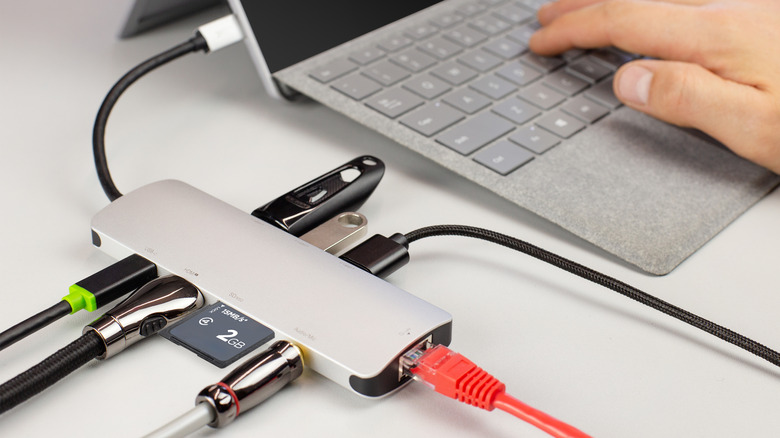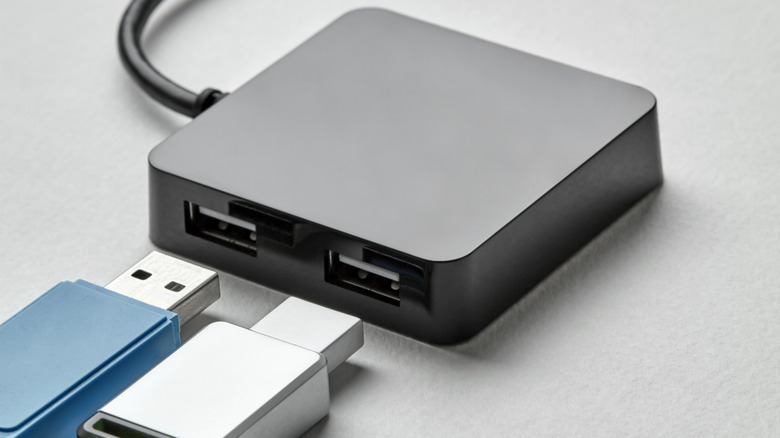Are There Downsides To Using A USB Hub?
An affordable and feature-packed USB hub can feel like a lifesaver when your laptop or desktop starts running out of ports, as it lets you plug in everything, from external drives to keyboards and webcams, all through a single device. However, you're not imagining things if you've used a USB port and have noticed random disconnects, slow data transfer speeds, or devices that won't power on.
While USB hubs are designed for convenience, they're not without trade-offs. Depending on the quality of the hub and how many devices are connected, you can run into issues like limited bandwidth, insufficient power delivery, or occasional hardware instability. For instance, some of the best external hard drives and cameras, with high power draws, may not receive enough juice from an unpowered hub, leading to performance hiccups or outright disconnects.
A USB hub won't necessarily harm your system, but it can introduce quirks that are worth understanding before you rely on one full-time. From power distribution and data bottlenecks to potential interference, there's a lot more going on under the hood of a simple USB hub than you may expect. Here's what you should know about the potential downsides of using a USB hub, and how to avoid them.
The downsides of USB hubs
USB hubs will level up your workspace, but as mentioned, they can also come with hidden compromises that are easy to overlook. The biggest one is performance. Every device you plug into a hub shares the same data bandwidth, so if you're transferring large files such as videos or high-resolution photos from an external SSD while also running a USB microphone and camera, you might notice slower transfer speeds or connection issues. It's not that your USB hub is broken; the problem comes from trying to juggle too many devices at once.
Power can also be an issue with USB hubs. Many budget hubs are "bus-powered", meaning they draw energy directly from your computer's USB port. That's usually fine for lightweight gear like keyboards, flash drives, and mice, but once you start plugging in power-hungry devices such as external drives, you risk sudden disconnects and unreliable behavior. A powered hub with its own AC wall adapter helps, but it will end up adding another cable to your desk space.
Not all hubs are created equal. Cheap, unbranded models sometimes compromise on build quality, causing driver conflicts or random dropouts. If you chain multiple hubs together or use long cables, signal degradation can creep in, too. Much like buying any other USB accessory, always buy a USB hub from a reputable brand such Anker or Sabrent.

